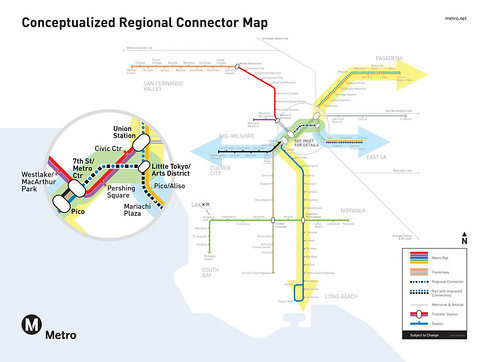Curbed LA: Turning Little Tokyo Into Futureland
[Caption]

Turning Little Tokyo Into Futureland
Thursday, August 13, 2009, by Neal Broverman
Little Tokyo Blogged has images and video of last week's Metro meeting on the Downtown Connector—a short rail line that will link together a bunch of light-rails and provide seamless travel from places like Long Beach to Pasadena and Culver City to East LA. Metro is exploring options on the Connector now, which would connect mainly in Little Tokyo, and looking at above-ground and subway iterations. LTB has images of the models that Metro provided, and one shows a giant green-blue bird that may spread its wings over Alameda Street (see attached image). The bird looks to be the canopy of an above-ground light-rail station that looks even cooler in the video; very Disney-ish. [LTB]
[Caption]























